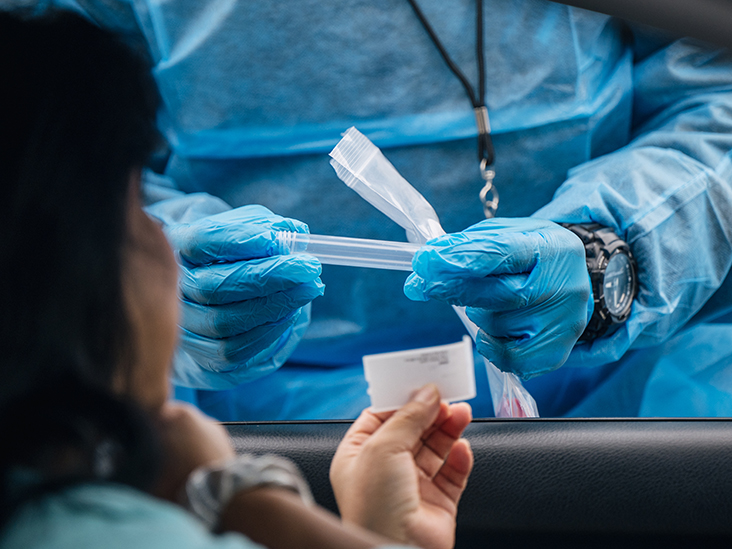Facts you need to know about PCR test At Home
A technique is known as “molecular photocopying” enables scientists to make several copies of a brief segment of DNA or RNA.
This approach is applicable in several circumstances. Doctors can use PCR tests to swiftly and precisely diagnose infectious illnesses, find genetic abnormalities that can lead to disease, and find small numbers of cancer cells.
Definition of PCR:
In 1983, American biochemist Dr. Kary Mullis developed the PCR method. It is a quick and inexpensive method for reproducing small amounts of genetic material.
Large amounts of DNA are often needed for molecular and genetic testing, but the PCR technique enables researchers to create millions of copies from a small amount of DNA.
In medical and biological research labs, polymerase chain reaction (PCR) technology is often employed and has a variety of uses.
On the other hand, when someone uses the term “PCR test,” they typically mean a quick and precise diagnostic test for spotting early indications of an infectious disease. For instance, this is one technique for detecting COVID-19’s causative agent, SARS-CoV-2.
Uses of PCR test:
Due to the COVID-19 outbreak, the term “PCR test” has gained widespread recognition. Beyond COVID-19 testing, the method has various medicinal applications.
Doctors can also employ a PCR at home Dubai test to find tiny cancer cells and genetic changes that cause disease. PCR assays can also detect additional infections, such as the following:
- Influenza
- Tuberculosis
- HIV
- Reliable Ebola
- Histoplasmosis C
What is the test’s procedure?
DNA sequences are amplified using a PCR test. It uses DNA primers, DNA bases, enzymes, a buffer solution, and heat cycling to assist in replicating these sequences.
The first step is to collect a sample from the test subject. The following is a list of the permissible model kinds.
A lab researcher then uses a specialized device to heat the material. The DNA gets split into two single-stranded pieces as a result. After that, as the reaction cools, primers can bind to the DNA sequences in the template. To allow the Taq polymerase enzyme to add DNA bases to the templates, it then warms up. Two strands of DNA are produced by duplicating the original material.
Making many flawless clones of the original DNA segment is possible by automating the entire process and repeating it as often as required.
The device may identify the presence of a pathogen after recreating the genetic material in a diagnostic PCR test. Some viruses, including the SARS-CoV-2 virus, are composed of RNA rather than DNA. These viruses’ RNA is processed using reverse transcription PCR. The RNA is changed into DNA before being duplicated.
The results of a PCR test can be obtained in a few minutes or over several days. An onsite analyzer produces results quickly. When doctors send samples to a lab off-site, results can occasionally take longer to return due to processing delays.
PCR testing appears to have correctly identified the presence of SARS-CoV-2. A comprehensive review and meta-analysis published in 2021 found that the tests for this virus were accurate in 97.2 percent of cases.
A description of the results
Depending on the test’s purpose, a positive PCR test result can point to the presence of a pathogen, cancer cells, or genetic changes. Negative effects indicate that these aren’t there.
A positive PCR result for COVID-19 indicates that the assay found SARS-CoV-2 in the sample. This suggests that the person may acquire COVID-19. Some individuals contract a virus but don’t display any symptoms.
A negative test result indicates that SARS-CoV-2 was not present in the sample. However, if there weren’t sufficient viral material in the model, the test wouldn’t be able to detect it.
PCR test types
Depending on the sample, different PCR assays are available. Here are some examples of typical types:
Nasal swab: This involves taking a sample by swabbing the throat and back of the nose.
This swab, also called an “NMT” swab, collects a sample from deep inside the nostril.
Spitting saliva into a tube is the method for submitting this sample.
Blood: A vein-based blood sample must be obtained for several PCR assays.
What transpires throughout a test?
It takes a few minutes and little preparation to give a sample for a PCR test. A person can be required to fill out a form with personal data like their name and birthdate.
The sample needed for the test determines the subsequent steps. A long swab, for instance, would need to be inserted into a person’s nostril by a medical professional, or the individual might be able to do it themselves. The person taking the sample spins the swab in the nose for 10 to 15 seconds before withdrawing it and repeating the procedure in the other nostril.
Risks of PCR tests
PCR tests often carry little to no risk, if any.
The kind of sample could have adverse effects. For instance, there may be some pain or bruises after giving blood, but these often go away quickly.
Swabs of the nose, throat, or both may cause mild nausea, discomfort, and coughing. These ought to be brief and endure for a few days.
Who could require a PCR test?
Pathogens, including viruses, cancer cells, and genetic changes, can be found using the cheapest PCR test in Dubai.
In the ongoing COVID-19 pandemic, PCR tests can check for the presence of the underlying virus, SARS-CoV-2.
The rules are currently in force. A person should be tested for SARS-CoV-2 if they exhibit any of the following symptoms:
- The COVID-19 virus still causes symptoms after vaccination.
- I’ve had close relationships with people who have tested positive for AIDS or HIV.
- Engaged in activities that increase the risk of developing the infection
- You’ve been asked to take a test by a healthcare professional or the health department.
Testing for antigens:
SARS-CoV-2 is just one of the numerous essays that can find infections. Molecular diagnostics such as PCR and antigen assays can identify illnesses as they develop.
Tests for viral proteins, referred to as “lateral flow tests” instead of viral RNA, are known as antigen tests. Results are obtained in 15–30 minutes, making this test more affordable and quicker than a PCR test. However, compared to PCR procedures, antigen testing is often less sensitive.
Summary
PCR testing is a standard scientific technique. It can help early detect genetic changes, cancerous cells, and illnesses like SARS-CoV-2.
To perform the test, a body fluid sample must be collected, and the genetic material in the model must be processed to produce numerous copies.
The COVID-19 PCR test can take longer than other tests, but the outcomes are frequently more accurate.
The message from Royal Premiere Healthcare
Loving company is among the primary nursing services provided by our nursing staff. This one-on-one, the kind company is tailored to the requirements of older people in their final years. We outperform all other home healthcare services in this area by offering social companionship and frequent activities to support the rehabilitation process, such as walking, eating meals, reading, and exercising.
To keep our patients occupied and content while reducing the risk of unfavorable results, we provide a variety of high-quality home nursing services, such as doctor on call, physiotherapy at home, and PCR test at home. Additionally, so that the patient can recover fast, our home nurses see that they get the required therapy as soon as possible.
For our clients to organize their efforts appropriately, we try to deliver results to them within a few hours. As a result, our clients have confidence in us and choose us over competitors. We keep everything transparent and entertaining, from our standards and methods to the outcomes we produce.
So, if you’re considering performing a PCR test at home Dubai, go with the most reputable brand and have it done by a qualified medical professional.







